The Legendary Pearl Syncussion SY-1

The Pearl Syncussion SY-1, introduced in the late 1970s, is a legendary drum synthesizer known for its unique sound shaping capabilities and wide tuning range. At the core you find two identical modules each containing two oscillators, a custom filter, two envelope generators, LFO and Sample & Hold, it also got a noise generator. It has been the secret weapon of many. Below are the key technical aspects of this iconic machine:
The SY-1 features six oscillator modes: they are like internal preset connections: single oscillator, FM, dual oscillator mix, dynamic oscillator mix, FM/Custom Ramp OSC*, and pure noise. These modes provide a wide range of sound possibilities, from deep bass kicks to high-pitched toms and complex noise effects.

The SY-1 features a voltage-controlled oscillator utilizing a TRI core and CMOS 4069 hex inverters. This configuration allows for complex waveform generation through cross-modulation, providing rich and diverse sound textures. The cross-modulation capabilities and extra harmonics inherent from the VCO circuit contribute to the SY-1’s signature sound.
The VCF in the SY-1 is a state-variable filter using 4069 inverters. It stands out due to its unique characteristics (poles spreading), resulting from unequal integrator capacitors and the absence of direct resonance control, offering distinctive filter sweeps and tones.
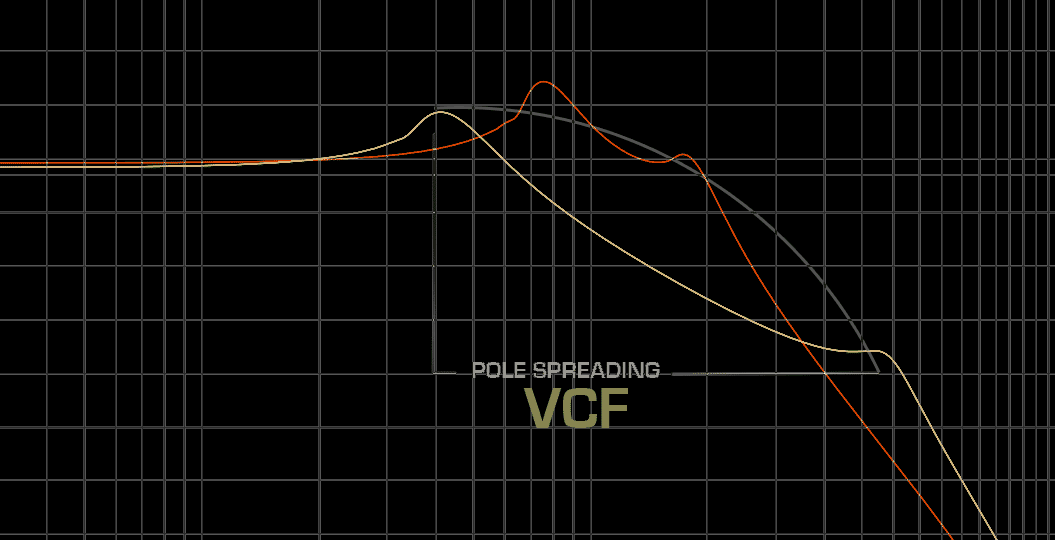
The VCA utilizes a standard transistor pair-diff opamp setup, ensuring reliable amplification and sound clarity. This configuration contributes to the SY-1's powerful and punchy audio output.
The SY-1 is equipped with an LFO with square and triangle waveforms for vibrato or audio rate modulation effects, and a sample and hold circuit for random pitch changes with each hit (lovely). The envelope generators EG1 (called SWEEP -trigger independent) and EG2(dynamic -from trigger pulse) offer extensive control, allowing intricate sound shaping.
The module includes tune, decay, and filter cutoff (WIDTH) controls the latter actually controlling the amount of VCF modulation, enabling users to fine-tune the percussive sounds. The pitch sweep feature, with speed, range, and up/down controls, allows for dramatic pitch dives and rises. A notable detail -the decay is not only affected by the decay slider but also by the tune slider.
The original SY-1 was used by artists such as Prince, Kraftwerk, Herbie Hancock, Aphex Twin etc. contributing to its legendary status.
The Pearl Syncussion SY-1 remains a highly sought-after percussion synthesizer for its distinctive analog sound and versatile features. The SY-1 offers a unique and dynamic tool for creating a broad spectrum of percussive sounds. I have heard it used by many adventurous and skilled drummers over the internet and as always this baby got the -secret weapon flag.
SY-4X is not only a perfect re-creation of the SY-1's inner circuit, but it also offers significantly more options. These include four units in one, trigger-controlled 'mode scanning,' CMOS circuit 'defect' control to enhance harmonics beyond the original, real-time VCF integrator cap offset for dynamic pole movement, fine-tuning envelope response to match your playing style, and additional features like Drum Kit and Keyboard Modes.
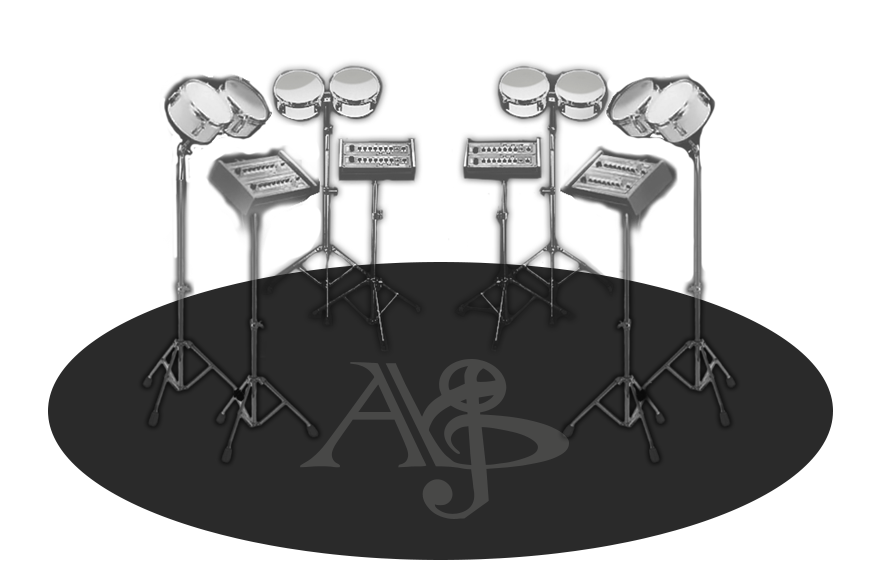
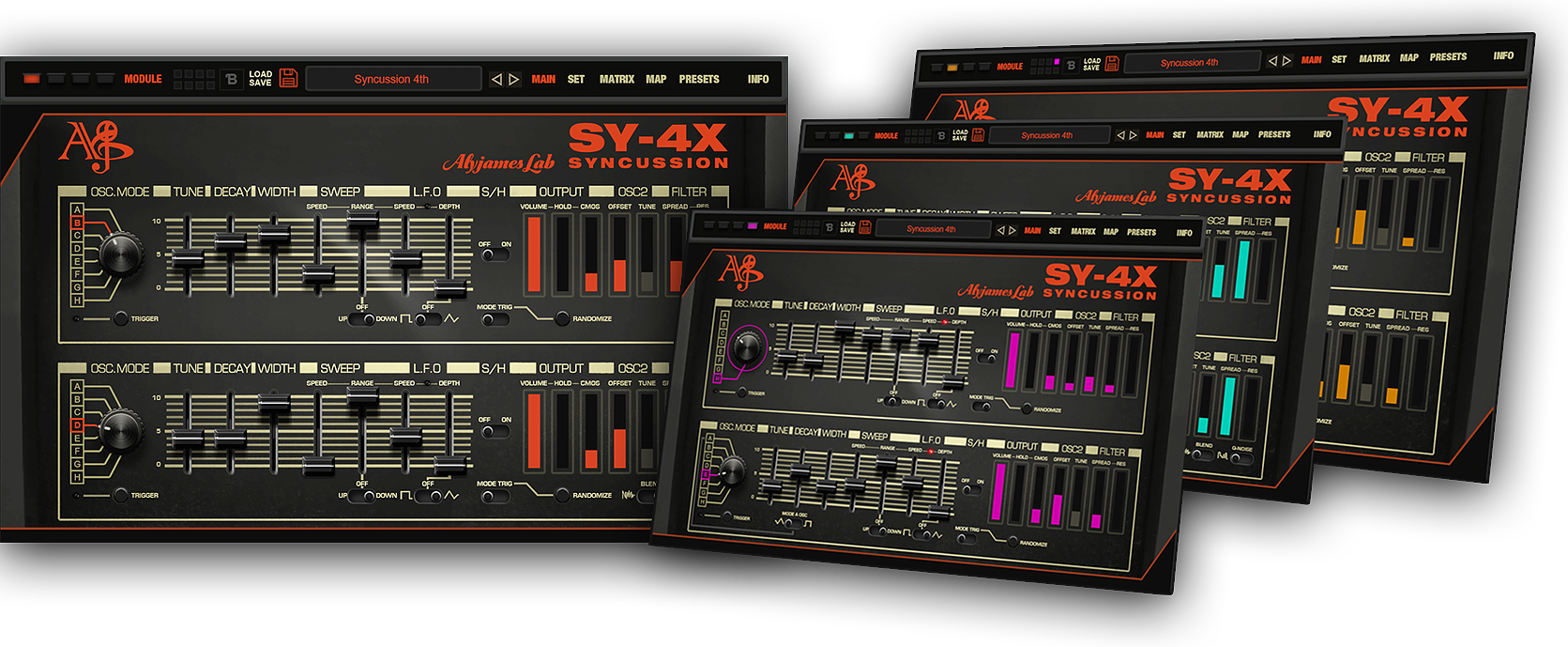

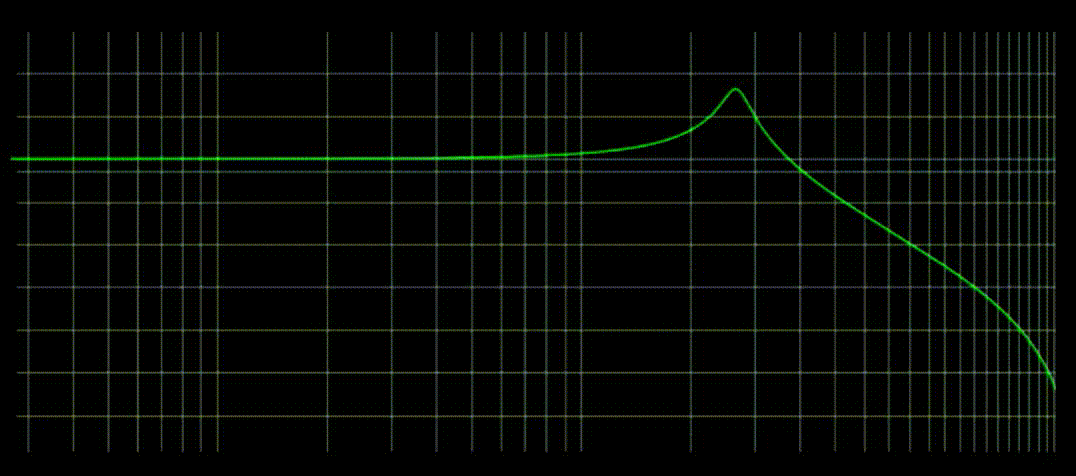
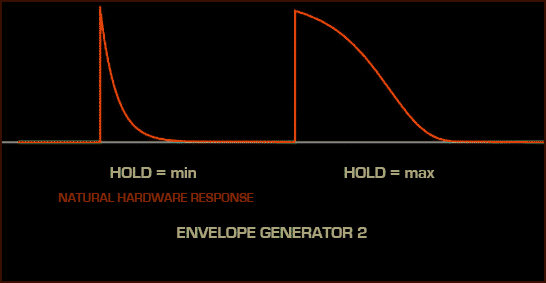
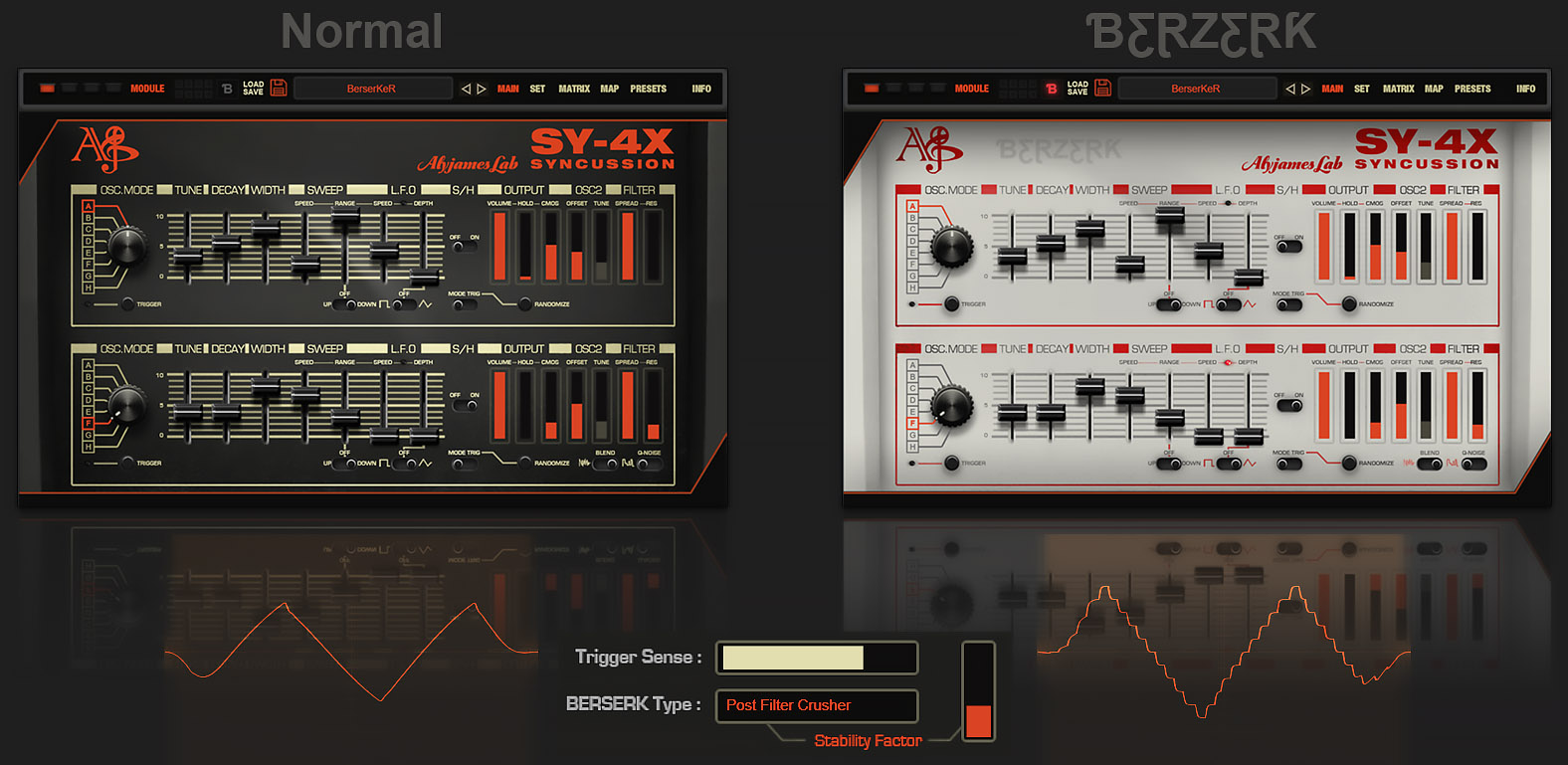
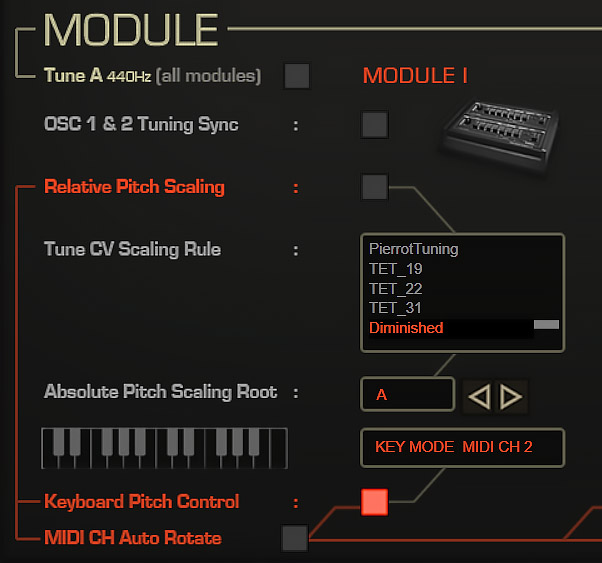

The Syncussion offered A, B, C, D, E and F Modes which are a predefined setting for
Oscillators
Pitch, Frequency Modulation, Volume levels and other modulation sources.
SY-4X adds two additional modes G and H.
Here is a description of each Mode, each one of them is better at producing certain types
of
sounds than others, experiment with them and you will find out!
Oscillator 1 outputs a triangular waveform to the VCF. Simple and effective, particularly nice in Keyboard Mode...

Oscillator 1 modulates the frequency of Oscillator 2, both triangular waveforms. Oscillator 2 outputs to VCF. Those classic Syncussion percussions...
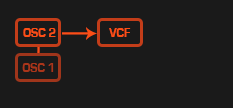
Oscillator 1 and Oscillator 2, both triangular waveforms, output to VCF, with Oscillator 2 set to a higher frequency.
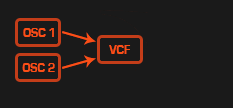
Oscillator 1 and Oscillator 2 are modulated by envelope generator 2. Both triangular waveforms output to VCF, with Oscillator 2 set to a higher frequency. Similar to Simmons, can produce nasty kicks...

Oscillator 1 modulates the frequency of Oscillator 2. Oscillator 2 is set to a pseudo SAW waveform and a higher frequency, outputting to VCF, which is set to a higher cutoff frequency. Close the filter for the Prince "explosion sound" heard in concerts in the early '80s...

Noise generator only, outputs to VCF. Awesome while controlling the tuning—the key is to have one hand on the control while playing, so you can instantly shorten a long decaying envelope, making it really expressive...
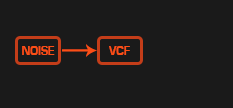
Oscillator 1 and Oscillator 2 are cross-ring modulated. Both OSCs are set to produce a square waveform, output to VCF. An extra TUNE slider is available to control the frequency of OSC2 independently and within a wider range than the offset slider. Super nice for creating cymbal or bell sounds...
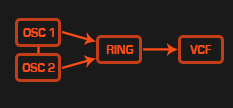
Oscillator 2 is synced to Oscillator 1. Oscillator 2 is set to a pseudo SAW waveform and outputs to VCF. An extra TUNE slider is available to control the frequency of OSC2 independently and within a wider range than the offset slider. Who doesn't like SYNC? SYNC drum sounds are nice too...
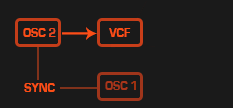
Note that those low res video snippets were made from unfinished dev versions, and many things have changed since, might be still useful though...


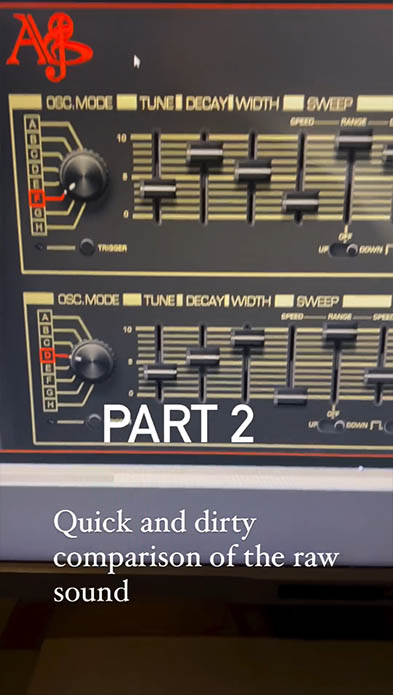
You can check your current version on the GUI.
SY-4X Syncussion for PC & Mac
| Machine | Format(s) | Architecture(s) | Native Processor(s) | OS Supported | Note |
|---|---|---|---|---|---|
| PC | VST3 | X64 | INTEL | Windows 10 or higher | |
| Mac | VST3, AU | X64 | INTEL/ARM | Mac OS-10.14 or higher |
SY-4X Syncussion comes with both PC & Mac Installers